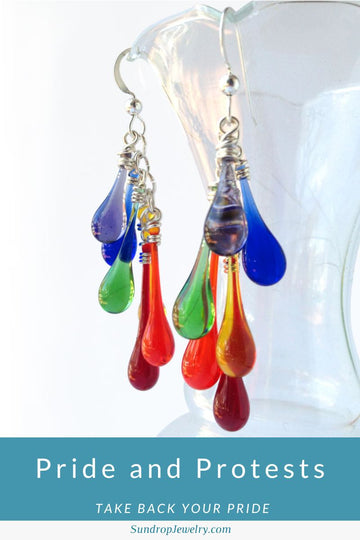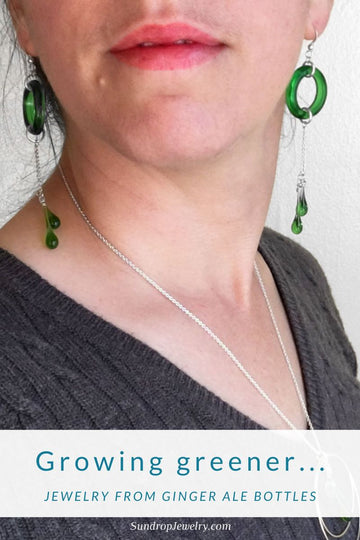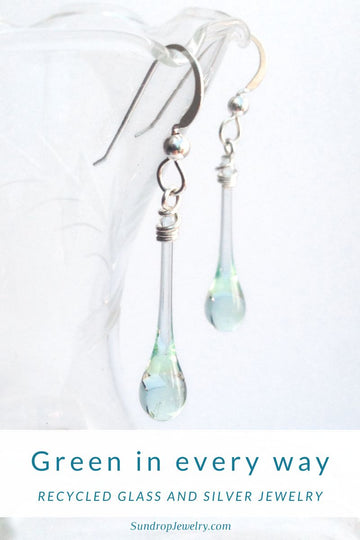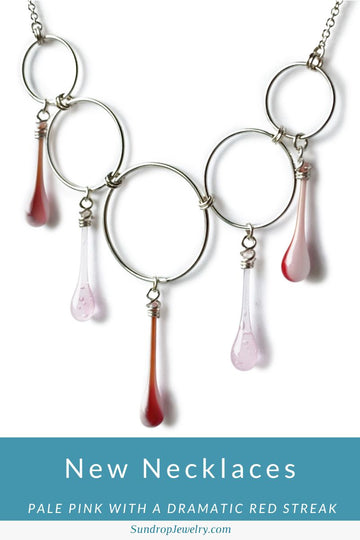
A pair of sundrops earrings is a tiny product - only about three and a half grams. So the total impact of the raw materials in any one pair of earrings is pretty small - and a big part of it actually comes from the paper card the earrings sit on.

Sundrop Jewelry card
This card is basically packaging - the end customer probably throws it away immediately (or hopefully recycles it). But without it, we can't display the earrings in a store, or print the information about the cool solar process where people can see it.
Paper is big part of the environmental footprint of a lot of companies
According to the chart from the Energy Information Administration, paper is the 4th largest industry in carbon emissions, after petroleum, chemicals, and metals. And pretty much every business, and every person, uses quite a bit of paper. It's often the second biggest impact in a business, after employee travel.
CO2 emissions by industry in the US
Environmental impact of paper
You can read about the environmental issues of paper production from Conservatree, or if you're really curious, read the 249 page report from the paper task force at Environmental Defense.Basically, paper uses trees (sometimes old growth), uses a lot of energy in its production (contributing to carbon emissions), and often uses polluting chemicals (in bleaching).
Our paper use
I'd love to say here that I carefully looked into different types of paper, and printing, and chose the most environmentally friendly thing for our jewelry cards. Really what happens is that we get a few orders we need to fill, look in the supplies, realize "Ack! We're all out of cards!", and rush to the nearest printers... So at the moment - it's all standard bleached white cardstock.Calculating paper's impact
I found a really cool online calculator at Environmental Defense's Paper Calculator, which lets you put in different kinds of paper and compare their impact, in wood use, energy use, CO2 emissions, and lots of different pollutants. You might have to put in a lot more paper than you actually use to see the differences - they tend to measure things (like wood use) in tons...To figure our impact, I took the weight of the jewelry cards for one thousand pairs of earrings (to make the numbers big enough to see), and assumed the national average values for pulp composition, bleaching process, etc... (default on the calculator). Then I had to add shipping. Since many of the tree plantations that grow paper pulp are in the south, I assumed all my jewelry cards came to me in a truck from Atlanta, GA (should be the right order of magnitude anyway).

In a pair of sundrops - the paper has a larger footprint than the glass
Even though glass has a greater impact per weight (largely due to the heat needed to form it), a carded pair of earrings has over twice as much paper as glass, and the footprint of the paper ends up being larger.

Using recycled paper will help,
but we'll save the most by shrinking the card.
How could we do better?
I did a quick calcuation with the paper calculator to compare our normal paper with 50% recycled paper. Then I compared both of those with just having a smaller jewelry card - using 50% less paper, but still no recycled. You can see in the chart, that actually, we'd have the biggest impact by just shrinking the jewelry card. Even better if we also made it from recycled paper.What's not accounted for
There's nothing in here on the impacts of actually printing on the paper (there's a lot of black ink on ours). Also nothing on the other paper use of our business (like catalogs, etc...). I'll try to get those in later.Two more ingredients to go - silver and plastic.
Related Articles





